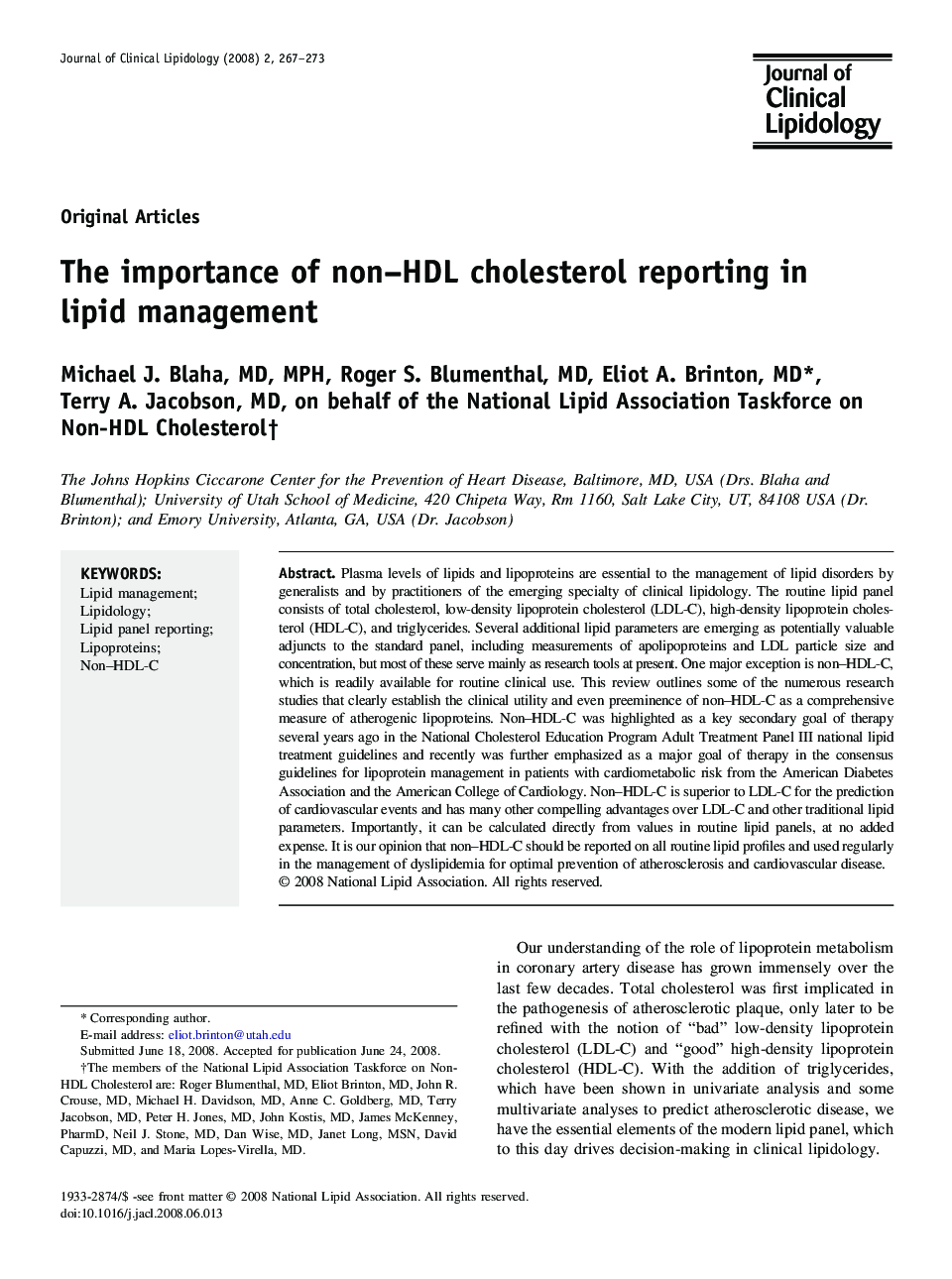| Article ID | Journal | Published Year | Pages | File Type |
|---|---|---|---|---|
| 2966898 | Journal of Clinical Lipidology | 2008 | 7 Pages |
Plasma levels of lipids and lipoproteins are essential to the management of lipid disorders by generalists and by practitioners of the emerging specialty of clinical lipidology. The routine lipid panel consists of total cholesterol, low-density lipoprotein cholesterol (LDL-C), high-density lipoprotein cholesterol (HDL-C), and triglycerides. Several additional lipid parameters are emerging as potentially valuable adjuncts to the standard panel, including measurements of apolipoproteins and LDL particle size and concentration, but most of these serve mainly as research tools at present. One major exception is non–HDL-C, which is readily available for routine clinical use. This review outlines some of the numerous research studies that clearly establish the clinical utility and even preeminence of non–HDL-C as a comprehensive measure of atherogenic lipoproteins. Non–HDL-C was highlighted as a key secondary goal of therapy several years ago in the National Cholesterol Education Program Adult Treatment Panel III national lipid treatment guidelines and recently was further emphasized as a major goal of therapy in the consensus guidelines for lipoprotein management in patients with cardiometabolic risk from the American Diabetes Association and the American College of Cardiology. Non–HDL-C is superior to LDL-C for the prediction of cardiovascular events and has many other compelling advantages over LDL-C and other traditional lipid parameters. Importantly, it can be calculated directly from values in routine lipid panels, at no added expense. It is our opinion that non–HDL-C should be reported on all routine lipid profiles and used regularly in the management of dyslipidemia for optimal prevention of atherosclerosis and cardiovascular disease.
